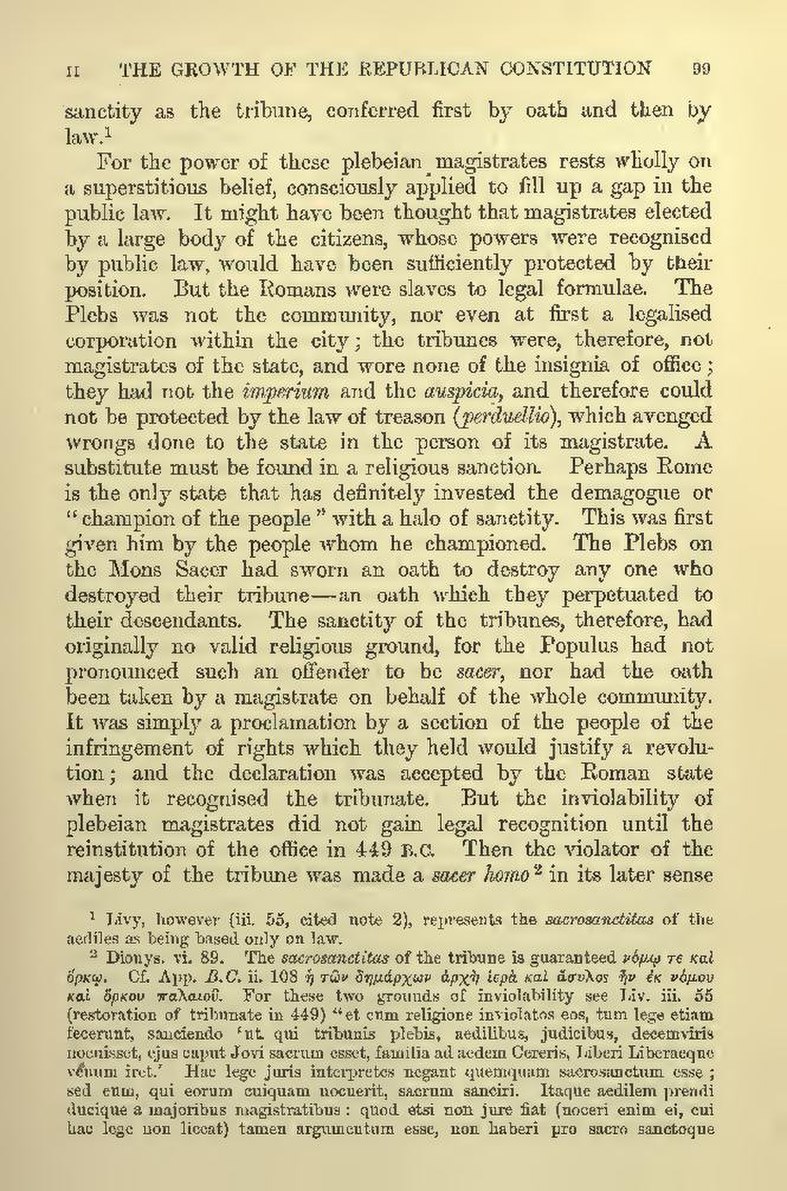sanctity as the tribune, conferred first by oath and then by law.[1]
For the power of these plebeian magistrates rests wholly on a superstitious belief, consciously applied to fill up a gap in the public law. It might have been thought that magistrates elected by a large body of the citizens, whose powers were recognised by public law, would have been sufficiently protected by their position. But the Romans were slaves to legal formulae. The Plebs was not the community, nor even at first a legalised corporation within the city; the tribunes were, therefore, not magistrates of the state, and wore none of the insignia of office; they had not the imperium and the auspicia, and therefore could not be protected by the law of treason (perduellio), which avenged wrongs done to the state in the person of its magistrate. A substitute must be found in a religious sanction. Perhaps Rome is the only state that has definitely invested the demagogue or "champion of the people" with a halo of sanctity. This was first given him by the people whom he championed. The Plebs on the Mons Sacer had sworn an oath to destroy any one who destroyed their tribune—an oath which they perpetuated to their descendants. The sanctity of the tribunes, therefore, had originally no valid religious ground, for the Populus had not pronounced such an offender to be sacer, nor had the oath been taken by a magistrate on behalf of the whole community. It was simply a proclamation by a section of the people of the infringement of rights which they held would justify a revolution; and the declaration was accepted by the Roman state when it recognised the tribunate. But the inviolability of plebeian magistrates did not gain legal recognition until the reinstitution of the office in 449 B.C. Then the violator of the majesty of the tribune was made a sacer homo[2] in its later sense. Cf. App. B.C. ii. 108 [Greek: hê tôn dêmarchôn archê hiera kai asylos ên ek nomou kai horkou palaiou]. For these two grounds of inviolability see Liv. iii. 55 (restoration of tribunate in 449) "et cum religione inviolatos eos, tum lege etiam fecerunt, sanciendo 'ut qui tribunis plebis, aedilibus, judicibus, decemviris nocuisset, ejus caput Jovi sacrum esset, familia ad aedem Cereris, Liberi Liberaeque venum iret.' Hac lege juris interpretes negant quemquam sacrosanctum esse; sed eum, qui eorum cuiquam nocuerit, sacrum sanciri. Itaque aedilem prendi ducique a majoribus magistratibus: quod etsi non jure fiat (noceri enim ei, cui hac lege non liceat) tamen argumentum esse, non haberi pro sacro sanctoque]*
